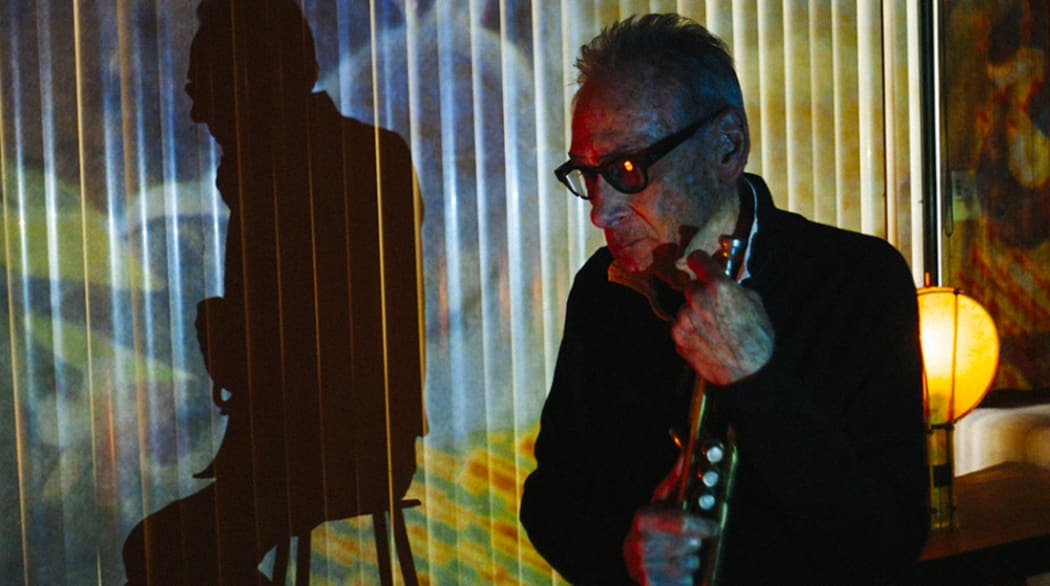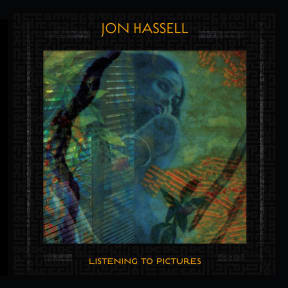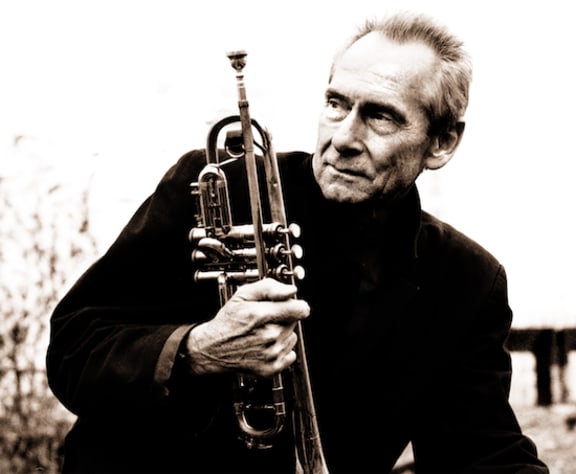Nick Bollinger discusses the 'fourth world' concepts of electronic adventurer Jon Hassell.

Jon Hassell Photo: supplied
When Talking Heads recorded their landmark Remain In Light album, David Byrne and producer Brian Eno had just come off a joint project, My Life In The Bush Of Ghosts, which had drawn on African structures and sensibilities, though the picture it created was ultimately one of a place existing more in the imagination than in any actual geography.
Crucial to this experiment, though seldom given credit, was a third musician: Jon Hassell. More than a decade older than Byrne and Eno, he had already conceived what he called ‘fourth world’ music before he and Eno collaborated on Possible Musics.
He also played on Remain In Light and was involved early on with Bush Of Ghosts; that is, until, as he puts it, ‘the testosterone in the room’ forced him out. For whatever reason, he has never been as big a name as Eno or Byrne, which doesn’t mean he is not the most brilliant musician of the three.

Listening To Pictures Photo: supplied
Listening To Pictures is the first new music the 81-year-old musician has released in nine years, and if you were looking for a place to start, this could be as good as any. Originally from Memphis, Hassell’s beginnings were in jazz. He’s a trumpet player, and in a track like ‘Dreaming’ you you might hear echoes of a jazz chord cycle and even the residue of a swing feel. But his fascination with chords is not so much about the way they can be assembled into songs, but rather the subtle shadings that different clusters of notes can create.
Though he grew up on the edge of the Mississippi delta, and did a spell in Washington in an army band, by the mid-60s a scholarship had taken him to Cologne, where he studied with the composer Karlheinz Stockhausen. Holger Czukay and Irmin Shmidt who would later form the group Can were in his class. Stockhausen’s electronic compositions had a formative effect. But at least as audible is the influence of Indian music, which he also immersed himself in. And you might hear a meeting point between electronic minimalism and the complex polyrhythms of a raga in ‘Pastorale Vassant’.

Jon Hassell Photo: supplied
Though stateless ‘fourth world’ finds commonalities between the musics of varied and disparate cultures. A track like ‘Al Kongo Udu’ begins with a Nigerian udu drum, which Hassell overlays with rich washes of synthesised keyboard and treated trumpet, creating the sense that one has stumbled into the deep musical tradition of an unknown country.
Hassell’s trumpet is not always recognisable as such, and on this album there’s almost nothing that sounds like the conventional brass instrument we know. He’ll temper it with all kinds of electronic processing, often fattening it harmonically so that it seems to be playing chords. And yet the lines he picks out still have an essential trumpet-ness about them, that can remind me of Miles Davis, especially his great work with the great Gil Evans.
The title Listening To Pictures is a good a description of what Hassell invites listeners to do. These are sound paintings, to be experienced not as linear compositions but more like canvases, in all their colour and texture. But it also has a subtitle, which says something even more specific: Pentimento - an Italian term for repentance, but used in painting to describe a work where the artist has evidently changed his mind; made alterations where the original can still be seen. And that seems to be what’s going on here. There are layers to this music, some derived from earlier compositions, over which Hassell seems to be adding and erasing and reshaping, in real time.
Hassell has been doing this sort of thing since his first releases back in the 70s, and if it no longer sounds as strange and futuristic as it once did, that’s mostly just because his influence has seeped into so much other music that’s been made since, often by artists with higher profiles. Yet his touch remains unique. Where this kind of ambient, electronically shaped stuff can often seem static, like abstract elevator music, Hassell’s always has movement. For all of his reliance on laptops, he captures the same meeting of the cerebral and the sensual of the best jazz; simultaneously sinewy and searching.
Oh, and this welcome release has a third subtitle: Volume 1. Hopefully that means there’s more to come.

